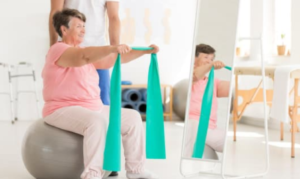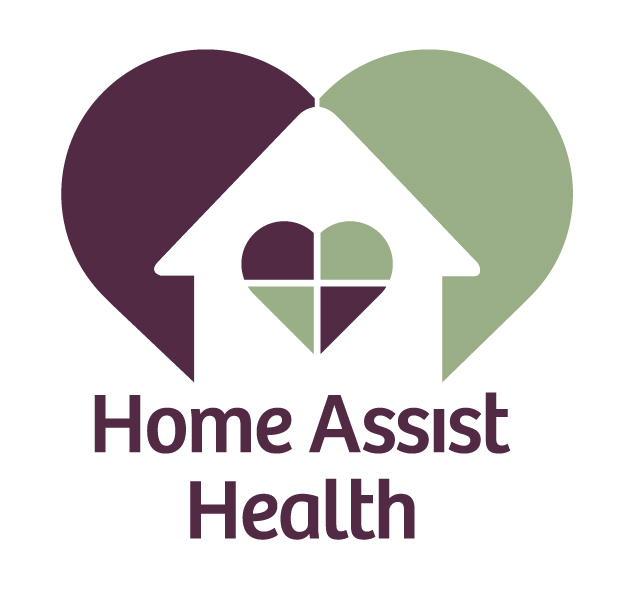 Have you ever suffered from excessive nervousness, fear or worrying? Do you sometimes experience chest pains, headaches, sweating, or gastrointestinal problems? You may be experiencing symptoms of anxiety. Between 3% and 14% of older adults meet the criteria for a diagnosable anxiety disorder, and a recent study from the International Journal of Geriatric Psychiatry found that more than 27% of older adults under the care of an aging service provider have symptoms of anxiety that may not amount to diagnosis of a disorder, but significantly impact their functioning.
Have you ever suffered from excessive nervousness, fear or worrying? Do you sometimes experience chest pains, headaches, sweating, or gastrointestinal problems? You may be experiencing symptoms of anxiety. Between 3% and 14% of older adults meet the criteria for a diagnosable anxiety disorder, and a recent study from the International Journal of Geriatric Psychiatry found that more than 27% of older adults under the care of an aging service provider have symptoms of anxiety that may not amount to diagnosis of a disorder, but significantly impact their functioning.
Identifying Risk Factors for Anxiety
Like depression, anxiety disorders are often unrecognized and under treated in older adults. Anxiety can worsen an older adult’s physical health, decrease their ability to perform daily activities, and decrease feelings of well-being. These include:
- Chronic medical conditions (especially chronic obstructive pulmonary disease [COPD], cardiovascular disease including arrhythmias and angina, thyroid disease, and diabetes)
- Overall feelings of poor health
- Sleep disturbance
- Side effects of medications (i.e. steroids, antidepressants, stimulants, bronchodilators/inhalers, etc)
- Alcohol or prescription medication misuse or abuse
- Physical limitations in daily activities
- Stressful life events
- Negative or difficult events in childhood
- Excessive worry or preoccupation with physical health symptoms
A quick, easy and confidential way to determine if you may be experiencing an anxiety disorder is to take a mental health screening. A screening is not a diagnosis, but a way of understanding if your symptoms are having enough of an impact that you should seek help from a doctor or other professional.
The Realistic Approach to Exercise for Anxiety and Depression
When you have depression or anxiety, exercise often seems like the last thing you want to do. But once you get motivated, exercise can make a big difference. Here are some realistic tips to help you get started and stay motivated.
Regular exercise may help ease depression and anxiety by:
- Releasing feel-good endorphins, natural cannabis-like brain chemicals (endogenous cannabinoids) and other natural brain chemicals that can enhance your sense of well-being
- Taking your mind off worries so you can get away from the cycle of negative thoughts that feed depression and anxiety
Regular exercise has many psychological and emotional benefits, too. It can help you:- GIMeeting exercise goals or challenges, even small ones, can boost your self-confidence. Getting in shape can also make you feel better about your appearance.
- Get more social interaction. Exercise and physical activity may give you the chance to meet or socialize with others. Just exchanging a friendly smile or greeting as you walk around your neighborhood can help your mood.
- Cope in a healthy way. Doing something positive to manage depression or anxiety is a healthy coping strategy. Trying to feel better by drinking alcohol, dwelling on how you feel, or hoping depression or anxiety will go away on its own can lead to worsening symptoms.
Is a structured exercise program the only option?
Some research shows that physical activity such as regular walking — not just formal exercise programs — may help improve mood. Physical activity and exercise are not the same thing, but both are beneficial to your health.
- Physical activity is any activity that works your muscles and requires energy and can include work or household or leisure activities.
- Exercise is a planned, structured and repetitive body movement done to improve or maintain physical fitness.
- The word “exercise” may make you think of running laps around the gym. But exercise includes a wide range of activities that boost your activity level to help you feel better.
- Running, lifting weights, playing basketball and other fitness activities that get your heart pumping can help. But so can physical activity such as gardening, washing your car, walking around the block or engaging in other less intense activities. Any physical activity that gets you off the couch and moving can help improve your mood.
How much is enough?
Doing 30 minutes or more of exercise a day for three to five days a week may significantly improve depression or anxiety symptoms. But smaller amounts of physical activity — as little as 10 to 15 minutes at a time — may make a difference. It may take less time exercising to improve your mood when you do more-vigorous activities, such as running or bicycling. The mental health benefits of exercise and physical activity may last only if you stick with it over the long term — another good reason to focus on finding activities that you enjoy.
How do I get started — and stay motivated?
Starting and sticking with an exercise routine or regular physical activity can be a challenge. These steps can help:
- Identify what you enjoy doing
- Get your mental health professional’s support
- Set reasonable goals
- Don’t think of exercise or physical activity as a chore
- Analyze your barriers
- Prepare for setbacks and obstacles
If you exercise regularly but depression or anxiety symptoms still interfere with your daily living, see your doctor or mental health professional. Exercise and physical activity are great ways to ease symptoms of depression or anxiety, but they aren’t a substitute for talk therapy (psychotherapy) or medications.
